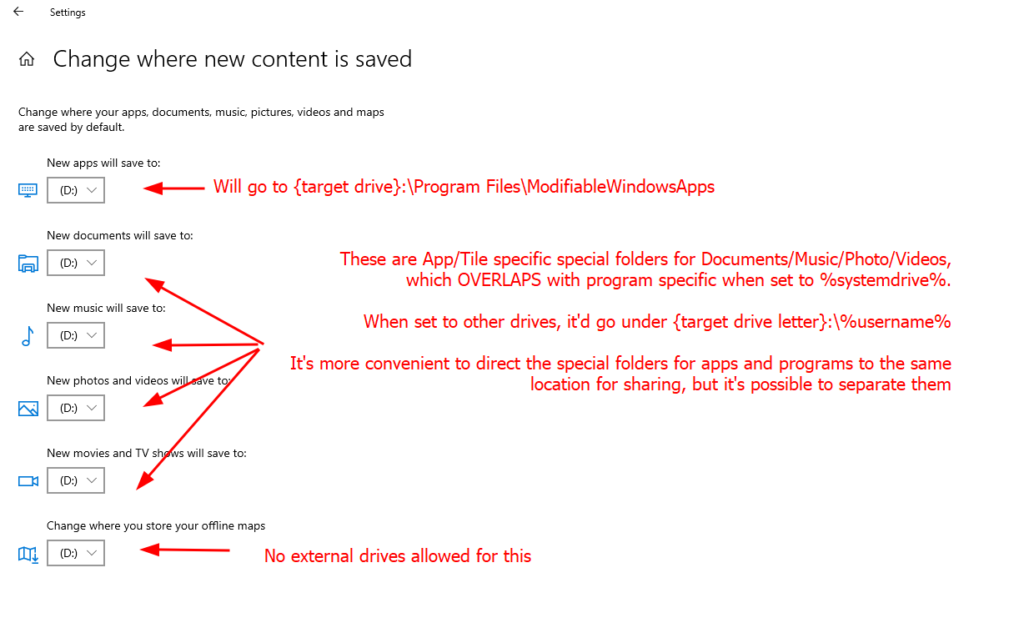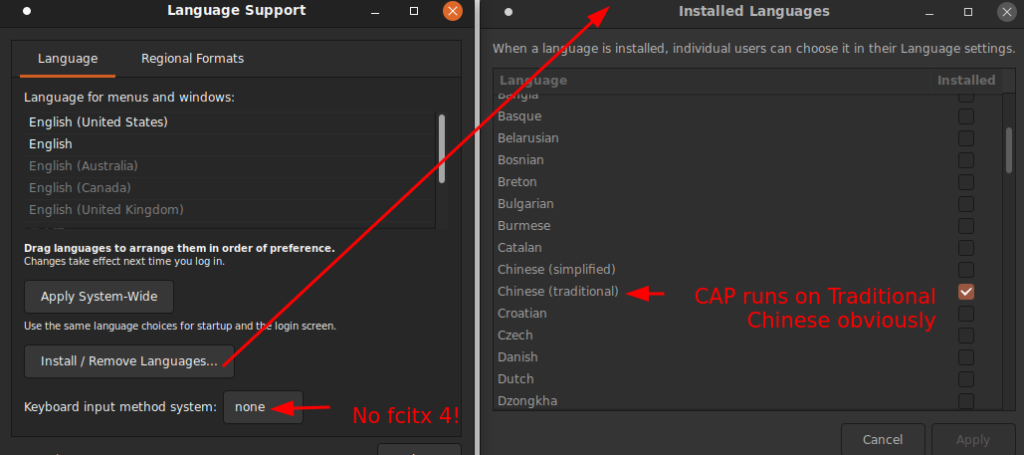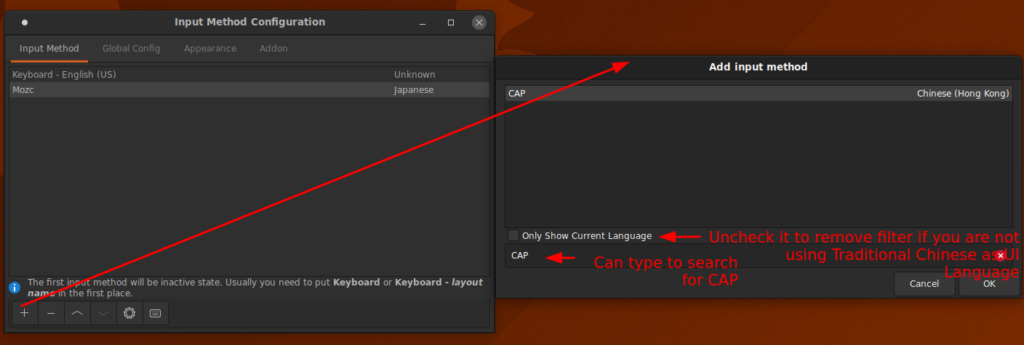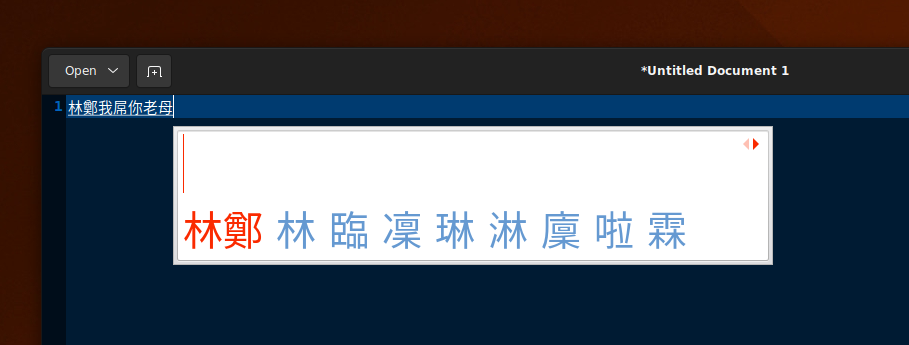Just out of good housekeeping, I’d like to move user folder to another drive letter so I can back it up quickly for re-installing Windows or plan program storage better (anything that can be re-installed, I don’t care to back it up).
There’s a lot of warning about messing with redefining where %userprofile% points to (which is %systemdrive%\Users\%username%) or using symbolic links (such as subst) for file redirection. So I’m sticking to the officially supported ways that doesn’t involve scripting or messing with the registry, i.e. move only the ones Microsoft expects users to be able to move it themselves.
I’ve identified these folders are safe to move:
The basic user shell folders
For a newly installed Windows 10, that’s basically every subfolders in %userprofile% itself!

Here’s the dumb way to do it which is taught nearly everywhere since Windows 7: using the location tab in these special shell folders:

They told you the hard and dangerous way modifying the registry, namely HKEY_CURRENT_USER\SOFTWARE\Microsoft\Windows\CurrentVersion\Explorer\User Shell Folders:

It’d be a pain in the ass to do it for 13 folders in Windows 10 (much less in Windows 7 so it was reasonable to do it this way back in the days). Turns out through experimentation, I figured that you can just move the shell folders to your chosen the destination folder, and the shell folders (which are decorated with extra features) can figure out they are being moved register the notifiers (aka the registry) properly, which is all the steps in location tab condensed to one drag and drop!
I observed the registry location and see what are the impact of the moves. A bunch of new entries are created corresponding to the 13 subfolders being moved

I believe those are the unique names for the named folder as their superficial name can change without having program confused about their nature.
I noticed only 6 core subfolders (which are the bread and butter ones that was there since Windows 7) is updated with the new path.

The others that are not changed are heavily tied to programs you installed (AppData) and Windows Explorer config (start menu, right-click explorer context menus) and IE stuff (cache and cookies). These data do not relate to the typical files users must backup but the configuration files that store user preferences. This is why I’m not surprised when Microsoft tells people not to mess with them because old software cruft might not handle them in a unified way after 20+ years of evolution.
App/Tiles (Metro UI) data starting Windows 8
Easus’ blog page might have confused the shell folders with files for Metro UI (Apps) and thought this is another way of moving files, which isn’t. This is the additional step specific to Tiled App files:


What I forgot to annotate above is “New apps will save to:” will also generate a \WindowsApps\MutableBackup folder. Such “Program Files” is owned by ‘SYSTEM’ account and “WindowsApps” is owned by ‘TrustedInstaller’ account, which you cannot clean them up after you changed your mind without first taking ownership and give yourself full permissions. Here are the folders created by the first item of the “Change where new contents is saved” page:

It’s usually more convenient to move the shell folders to {target drive}:\%username% that’s shared with the special folders for the Apps with the same name so Apps and programs can share files with a common folder. But technically these are two split concepts and you are free to make them separate.
The registry is not where you should muck with the path. Please let Windows’s proper user interface (shell folder’s Location folder handling) do it as registry is just one of the many places they will manage the settings. Also remember moving these special (aka shell) folders do not move your %userprofile% which is your home folder that things like Powershell starts with by default (I had to change the working directory and there isn’t a variable associated with the {target drive}:\%username% because variables to those special folders do not manage their root.
![]()














